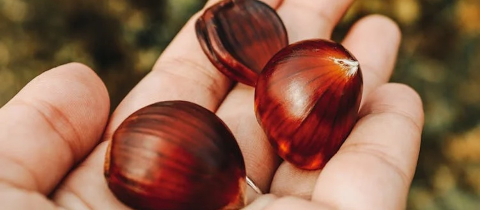“Moses looked, and behold, the bush burned with fire, and the bush was not consumed.” That passage from Exodus is one of the most famous ones in the entire Bible! After all, it was from that burning bush on Mount Horeb that God spoke to Moses, telling him that he had been chosen to lead his people out of slavery in Egypt.
Searching for possible scientific explanations for Biblical phenomena is an interesting pastime. Of course that is all it is, because for those who have faith that Biblical accounts are based on true miracles, no scientific explanation is necessary. And for those who are skeptical that the Bible is factual, no scientific rationalization is needed for events they believe never occurred. Whatever one’s point of view, Biblical stories can serve as a springboard for leaping into some captivating science.
Suggestions have been made that the Dictamnus albus plant, found throughout northern Africa is a candidate for the burning bush. In the summer, the plant, also known as the “gas plant,” exudes a variety of volatile oils that can catch fire readily and may give the impression that the bush is burning. So, was Moses witnessing the combustion of a mix of terpenes, flavonoids, coumarins and phenylpropanoids? An interesting hypothesis about the burning bush, but one that can be readily doused.
The plant’s volatile oils do not catch fire spontaneously, they need a source of ignition. Moses is unlikely to have been walking around with flintstones looking for bushes to ignite. And when the vapours coming off the Dictamnus albus plant do ignite, the flash lasts just a few seconds. Had the flash managed to set the leaves on fire, the bush would certainly have been consumed. So, if the Moses really did see a burning bush that was not consumed, well, maybe he was seeing things. At least that is the opinion of Benny Shanon, professor of cognitive psychology at the Hebrew University in Jerusalem.
Professor Shanon suggests that Moses may have been having a hallucinatory experience. And he bases that theory on his own fling with plants that can alter consciousness. It seems Shanon was once invited to a religious ceremony performed by natives of the Amazon where he had the opportunity to taste a potion made from the ayahuasca plant. Off he went on a hallucinogenic trip which he described as having spiritual connotations! It isn’t clear exactly what he meant by that, but clearly he liked the experience because he claims to have repeated it hundreds of times, even writing a book on the subject. If it happened to him, it could have happened to Moses, he suggests, perhaps somewhat tongue in cheek.
The problem is that ayahuasca is a tropical vine found in the jungles of the Amazon, not in the sands of the desert. However, there is plant that grows in the Sinai and the Negev with similar properties. And that is Peganum harmala, also known as “wild rue.” Like ayahuasca, the plant’s seed capsules contain a number of alkaloids such as harmine, vasicine and harmaline that can affect the mind. These compounds interfere with the activity of an enzyme known as monoamine oxidase (MAO) which is involved in the breakdown of dopamine, serotonin, phenylethylamine, tyramine and melatonin, all compounds that play important roles in our nervous system. These monoamines, as they are called, increase in concentration in the presence of monoamine oxidase inhibitors (MAOI), such as the ones found in the seed pods of the wild rue. The result can be a consciousness altering experience. In fact, monoamine oxidase inhibitors are used as medications to treat depression by boosting levels of dopamine and serotonin which are involved in mood regulation. Whether the Israelites used psychoactive plants in religious ceremonies is debatable, but apparently modern day Bedouins who wander through the same desert where the Biblical accounts place Moses do partake of the wild rue.
Although the rue does contain psychoactive substances, its effects are very mild compared with ayahuasca. That’s because in the Amazon the natives have learned to combine ayahuasca extracts with those of another plant known as the Chacruna. This is a rich source of dimethyltryptamine (DMT), a potential hallucinogen. DMT is a “monoamine,” normally broken down by monoamine oxidase, but when Chacruna is combined with the monoamine oxidase inhibitors in ayahuasca, a powerful hallucinogenic effect is produced. Moses, alas, would have had no access to Chacruna.







